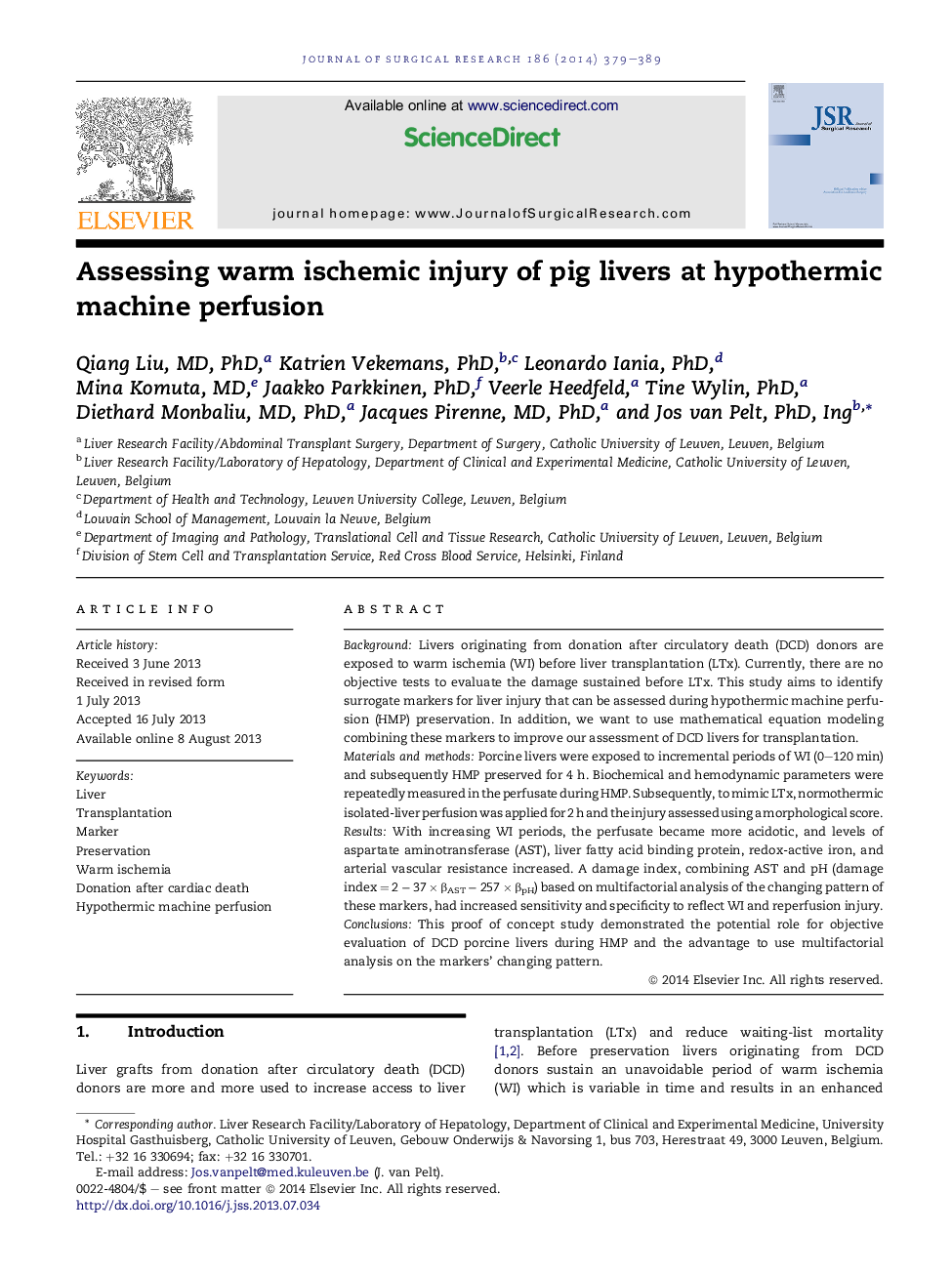| Article ID | Journal | Published Year | Pages | File Type |
|---|---|---|---|---|
| 6254222 | Journal of Surgical Research | 2014 | 11 Pages |
BackgroundLivers originating from donation after circulatory death (DCD) donors are exposed to warm ischemia (WI) before liver transplantation (LTx). Currently, there are no objective tests to evaluate the damage sustained before LTx. This study aims to identify surrogate markers for liver injury that can be assessed during hypothermic machine perfusion (HMP) preservation. In addition, we want to use mathematical equation modeling combining these markers to improve our assessment of DCD livers for transplantation.Materials and methodsPorcine livers were exposed to incremental periods of WI (0-120 min) and subsequently HMP preserved for 4 h. Biochemical and hemodynamic parameters were repeatedly measured in the perfusate during HMP. Subsequently, to mimic LTx, normothermic isolated-liver perfusion was applied for 2 h and the injury assessed using a morphological score.ResultsWith increasing WI periods, the perfusate became more acidotic, and levels of aspartate aminotransferase (AST), liver fatty acid binding protein, redox-active iron, and arterial vascular resistance increased. A damage index, combining AST and pH (damage index = 2 â 37 à βAST â 257 à βpH) based on multifactorial analysis of the changing pattern of these markers, had increased sensitivity and specificity to reflect WI and reperfusion injury.ConclusionsThis proof of concept study demonstrated the potential role for objective evaluation of DCD porcine livers during HMP and the advantage to use multifactorial analysis on the markers' changing pattern.
